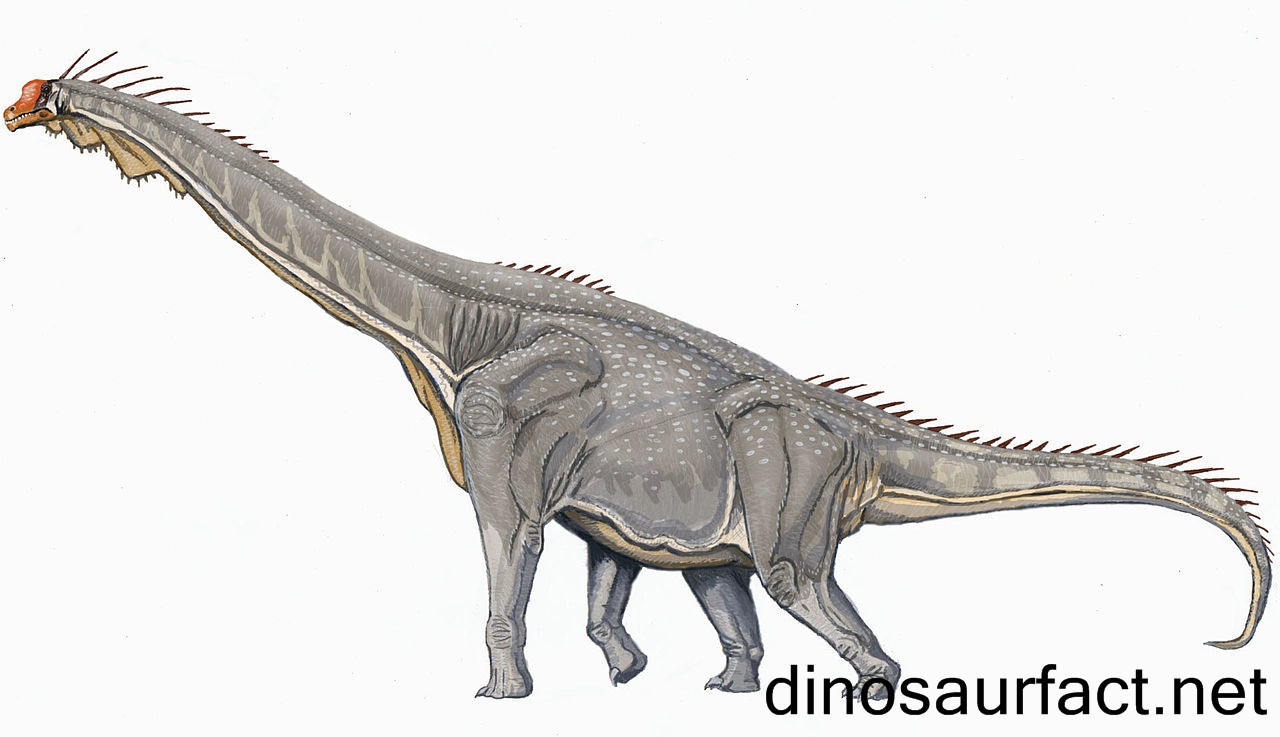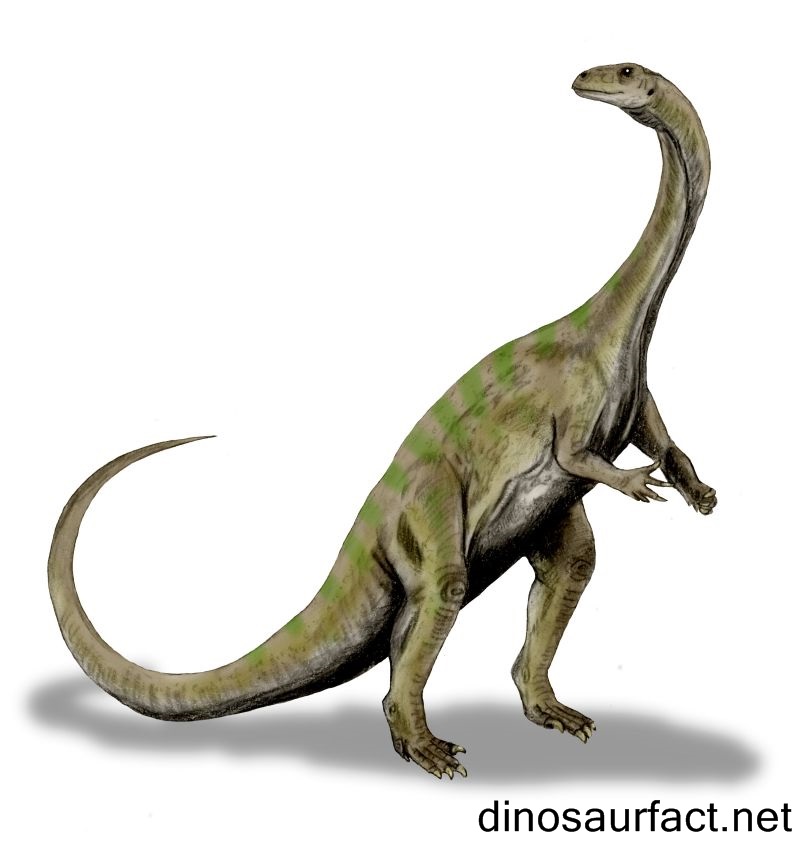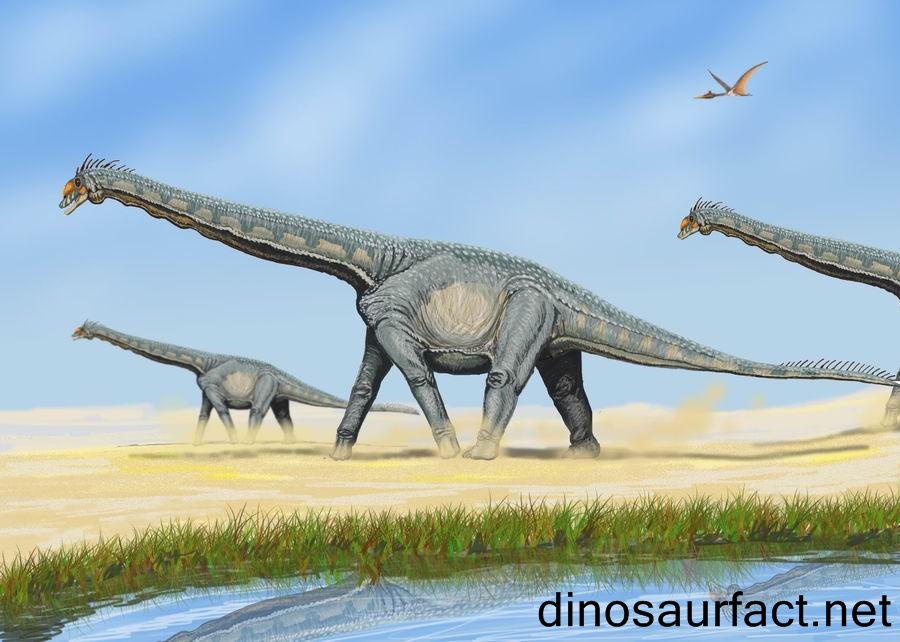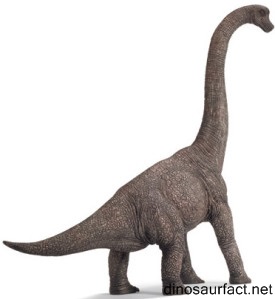 Click to visit the previous dinosaur bio
Click to visit the previous dinosaur bio
 |
|
 |
|
Kingdom: Animalia
Phylum: Chordata
Class: Sauropsida
Superorder: Dinosauria
Order: -Not Described-
Suborder: -Not Described-
Family: -Not Described-
Genus: Thotobolosaurus
 |
|
 |
|
 |
|

The Thotobolosaurus was an African dinosaur. Its fossils were discovered in the region of present day Lesotho. Although the Thotobolosaurus was found way back in 1955, there has been no scientist that has yet to publish any articles defining the position of the Thotobolosaurus in the taxonomic tree. The genus Thotobolosaurus is considered ‘nomen nudum’.
When it was first discovered it was presumed to be a Prosauropod or a dinosaur from order Sauropodomorpha which existed earlier in history than other Sauropods. Prosauropods were, in general, small to medium dinosaurs. They grew to the size of present day bulls.
Unless more research is done on the origins of the Thotobolosaurus, nothing about it can be said conclusively. Conjectures can only be made based on the initial thoughts of the paleontologist who discovered the fossils. It is very likely that the lack of conclusive evidence has prevented scientists from classifying the remains of the Thotobolosaurus. Paleontologists usually do not shy away from defining a genus even on the basis of a single bone if they feel that they have enough data backing them.
A nomen nudum taxonomic group
- The word ‘nomen’ translates to ‘name’ and the word ‘nudum’ translates to ‘nude’ in Latin. nomen nudum is used to indicate that the group is exposed or does not have enough substance. Such is the case of the Thotobolosaurus.
- For any name to be formally incorporated in the taxonomic tree, its species have to fulfil certain prerequisites. Unless they do, the name is open to be used by other scientists, even for completely unrelated species.
- Until some scientist publishes a paper meeting these fixed criteria, the name ‘thotobolosaurus’ may be used to denote some other animal.
Discovery of fossils
The fossils of the Thotobolosaurus were discovered by paleontologist Paul Ellenberger in 1955. He found them in Basutoland, which was then part of South Africa.
The remains were discovered near a shanty in the hamlet of Maphutseng.
Age of fossils
The remains of the Thotobolosaurus are estimated to be from the Norian to Rhaetian ages of the Triassic period of the Mesozoic era. Their age can be narrowed done to 220 to 200 million years ago.
Etymology
The fossils of the Thotobolosaurus were excavated near a small shed in Lesotho. They were found adjacent to the area where the residents of the hut would dump their garbage.
The word ‘thotobolo’ translates to ‘garbage dump’ in the Sotho language. The suffix ‘-saurus’ originates from the Greek word ‘sauros’ which means ‘lizard’. Thus, the name ‘thotobolosaurus’ indicates ‘the lizard of the refuse area’.
The binomial name Thotobolosaurus mabeatae is derived from the name of the owner of the house near which the remains were found. Mabeata was the matriarch of the house. Her name actually means ‘Beata’s mother’ in the Sotho language.
The christening of the remains was done by Paul Ellenberger, the discoverer of the fossils, in 1970.
Classification
The classification of the Thotobolosaurus cannot be considered canon as no investigations have been done about its lineage. Or at least no investigations have yielded any fruitful results.
Ellenberger thought the fossils belonged to a prosauropod dinosaur. And the age of the fossils fit this inference. But that alone cannot be considered proof of the legitimacy of the inference. As seen many a times in the past, even full skeletons have been wrongly classified by paleontologists.
The village of Maphutseng
- The village of Maphutseng, also known as the Makilanyaneng, is a settlement which is part of the Teke community of Lesotho. It is a sparsely populated area which relies on agriculture for its income. In 2007, the Maphutseng project was initiated to provide better education facilities for its residents.
- The Elliot Formation of southern Africa encompasses Lesotho and it was here that the fossils of the Thotobolosaurus were uncovered. It is part of the Stromberg group which is part of the Karoo super-group.
The Elliot Formation is a geological structure comprising of stratified rocks. It consists primarily of mudstone and sandstone. Many dinosaur fossils have been discovered here. The better known amongst them are the Plateosaurus, Lesothosaurus, Coelophysis and the Euskelosaurus.
Paul Ellenberger
Paul Ellenberger was a contemporary vertebrate paleontologist. He is best known for his work on the Cosesaurus aviceps. He believed that the Cosesaurus was associated with birds; he was of the opinion that the Cosesaurus was the ancestor of the Archaeopteryx.
Ellenberger has worked comprehensively in southern Africa, discovering many vertebrate fossils in the ‘red beds’ of the Karoo group. He had studied the land of Lesotho with his brother Francois Ellenberger.
His brother Henri Ellenberger was a renowned psychiatrist.
Physical features
Ellenberger believed that the Thotobolosaurus was a prosauropod. He noted in his initial analysis the bones looked like they belonged to a medium sized dinosaur. He compared them with those of the Melanosaurus and the Plateosaurus, but also noted that the specimen was probably not that big.
Based on these notes, it can be estimated that the Thotobolosaurus could have been anything between 10 to 20 feet long. It could have weighed around 200 to 600 kilos.
No other characters of the Thotobolosaurus have yet been identified. And the observations of Paul Ellenberger cannot be considered accurate as they were only based on a cursory study of the remains.
Habits and habitat
If the Thotobolosaurus was indeed a prosauropod, it had herbivorous feeding habits. There was no evidence indicating that the Thotobolosaurus was arboreal. And if Ellenberger’s approximation of the weight of the Thotobolosaurus was correct, it could only have been terrestrial.
No other information is available about the habits of the Thotobolosaurus.
The habitat of the Thotobolosaurus consisted of larger grasslands which has intermittent lakes and rivers. The environment of the Karoo group was able to easily sustain the larger sauropods of the Jurassic period.
Final notes about the Thotobolosaurus
The Thotobolosaurus has not yet been described in any scientific publication yet. Thus, all the information available about it is based solely on speculation.
Many prosauropod dinosaurs were discovered in southern Africa and thus it is very probable that the Thotobolosaurus was one of them. But unless the fossils are properly described, the Thotobolosaurus may only be considered as an African dinosaur that lived on the continent in the Triassic period.
Index
Extinct Profiles
 Triassic Dinosaurs
Triassic Dinosaurs Jurassic Dinosaurs
Jurassic Dinosaurs Cretaceous Dinosaurs
Cretaceous Dinosaurs Pterosaurs
Pterosaurs Marine Reptiles
Marine Reptiles Dinosaur Extinction
Dinosaur Extinction